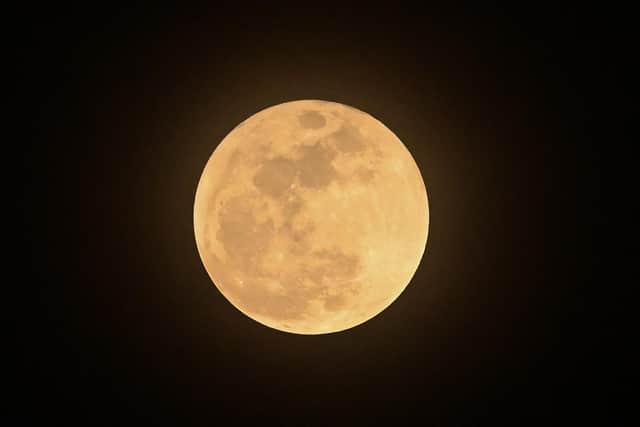Apollo 17: crystals brought back from lunar mission reveal the true age of the Moon - its older than we think
and live on Freeview channel 276
The Moon is 40 million years older than scientists previously thought after analysis from crystals brought back by Apollo astronauts in 1972 has revealed the Moon's true age.
The Moon was formed more than for billion years ago after a giant object the size of Mars crashed into Earth, causing a piece to break off and create the Moon.
Advertisement
Hide AdAdvertisement
Hide AdThe precise date when this happened is a mystery, but research used the crystals to pinpoint the time of the satellite’s formation - pushing the previously thought date by 40 million years, to at least 4.46 billion years old. An article describing the work, ‘4.46 Ga zircons anchor chronology of lunar magma ocean’, is published in the journal Geochemical Perspectives Letters.


Senior author Philipp Heck, a professor at the University of Chicago, USA, and curator in charge of the meteorite and physical geology collections at the Field Museum, said: “These crystals are the oldest known solids that formed after the giant impact and because we know how old these crystals are, they serve as an anchor for the lunar chronology.”
He added: “It’s amazing being able to have proof that the rock you’re holding is the oldest bit of the Moon we’ve found so far. It’s an anchor point for so many questions about the Earth. When you know how old something is, you can better understand what has happened to it in its history.”
The dust that had been brought back from the Moon in 1972 contained tiny zircon crystals formed billions of years ago, which could help scientists explain how the Earth developed into what it is today.
Advertisement
Hide AdAdvertisement
Hide AdDieter Isheim, from Northwestern University, who co-authored the study said: "This study is a testament to immense technological progress we have made since 1972 when the last manned Moon mission returned to Earth. These samples were brought to Earth half a century ago, but only today do we have the necessary tools to perform microanalysis at the requisite level, including atom-probe tomography.”
The age was revealed by analysing the crystals on an atomic basis where researchers counted how many of them had seen radioactive decay. Scientists know how long that takes – so can count the age of a sample by measuring how much it has happened.
The age is calculated as when a chunk of the Earth broke off, it would have melted and then solidified to become the Moon’s surface. When it was still molten, the crystals would not have been able to form, so the age of the crystals can tell us the minimum age of the Moon.
“Radiometric dating works a little bit like an hourglass,” said the Field Museum’s Philipp Heck, the study’s senior author. “In an hourglass, sand flows from one glass bulb to another, with the passage of time indicated by the accumulation of sand in the lower bulb. Radiometric dating works similarly by counting the number of parent atoms and the number of daughter atoms they have transformed into. The passage of time can then be calculated because the transformation rate is known.”
Comment Guidelines
National World encourages reader discussion on our stories. User feedback, insights and back-and-forth exchanges add a rich layer of context to reporting. Please review our Community Guidelines before commenting.
